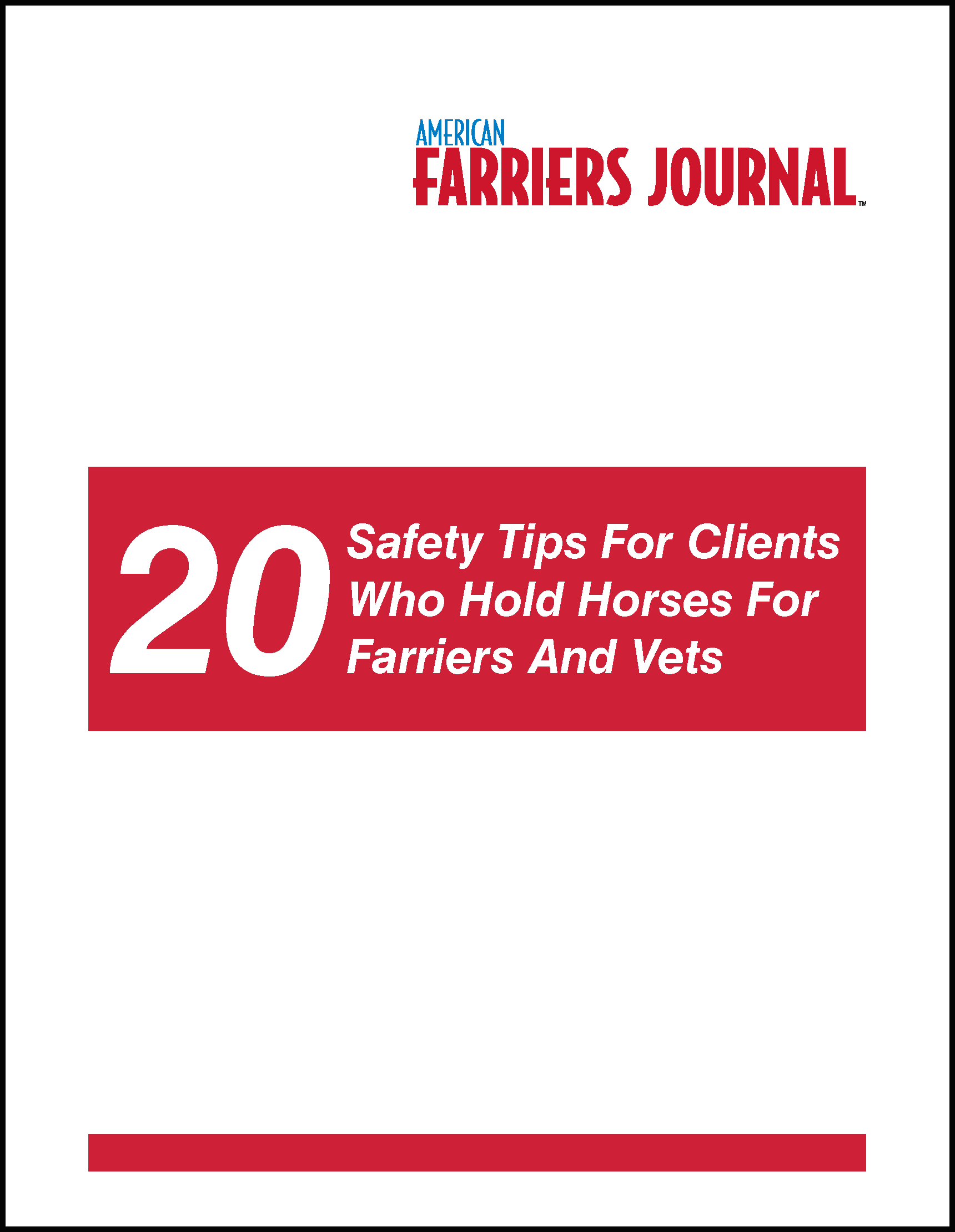
Dear Hoof-Care Professional,
These 20 safety tips should not only be followed, but could also spark ideas for other ways you can maintain the highest level of safety while doing what you do best.
In this eGuide, find safety tips that cover topics such as…
- Staying Safe During Fly Season.
- Tackling "Pulling" Issues.
- Keeping Your Horses Calm and Anxiety-Free.
- Disciplining Your Horses.
...And Many More!
We would also like to encourage our readers to come together as a community by sharing their own safety tips they’ve developed over time. Our comments section below has been created as a way for practicing farriers to swap ideas and support one another.
What’s working for you could be the one piece of advice that keeps a fellow farrier free from serious injury or even death. Let’s make these safety tips a common source of knowledge for all farriers.
A Real World Lesson
On a fall Southern California day in 2009, Pat Barrett, an experienced farrier of 45 years, lost his life after getting knocked over by a horse and hitting his head on a rock after falling. Securing a horse, something that Barrett had done countless times before, ended up being what cost him his life after agreeing to take on a farriery job in a rocky corral.
What gained the interest of countless farriers was the fact that California Court of Appeals dismissed a wrongful death lawsuit brought on by Barrett’s widow. During the attention-drawing lawsuit, Nancy Barrett brought up some pretty interesting questions:
- Whose responsibility is it to secure and restrain horses?
- Whose responsibility is it to determine whether the conditions are safe to work on a horse?
- Whose responsibility is it to determine whether the horse is too volatile in disposition and temperament?
According to court documents, “Securing the horses was an essential part of the job for which farrier Patrick was hired. The owner had no duty to secure the horses once he gave up care and control to the specialist.”
The overarching theme here is that once you accept care and control, YOU are made immediately responsible for ANYTHING that may happen while tending to the horse.
It's OK. You Can Say NO.
Although some farriers are criticizing the ruling as a blow against the industry, it actually empowers you. The court is telling you it’s OK to say no. You have the right to walk away rather than put yourself in unnecessary danger.
There are going to be clients who don’t understand your decision. Some will be angry. Others will fire you. The courts are very clear — the client will not be compelled to pay for your hospital bills, cover your lost wages, pay your funeral costs or take care of your family if you lose your life.
It’s OK to say no.
Let's Collaborate!
Horses can react suddenly, no matter how well-behaved they seem. American Farriers Journal has committed to publishing this report so that you and those working with and around you remain safe during working hours.
Caring for equine feet can be a rewarding profession, but a dangerous one. Don’t pass on this opportunity to learn how you can avoid running into dangerous situations while doing what you love.
As mentioned above, American Farriers Journal greatly encourages that you leave your opinions and advice below in the comment section. Although working as a farrier can at times be dangerous, collaborating together to solve the problem is the best solution.
Our goal is to jump-start a community of farriers willing to lend a helping hand to others in the same profession.
Feel free to leave your comments below and don’t forget to DOWNLOAD this new edition, made COMPLETELY FREE TO YOU.
Do you want to operate a safer and more efficient farrier practice?
Do you want to help others in your profession keep themselves safe during working hours?
Yours for better hoof care,
Jeff Cota
Managing Editor
American Farriers Journal



Post a comment
Report Abusive Comment